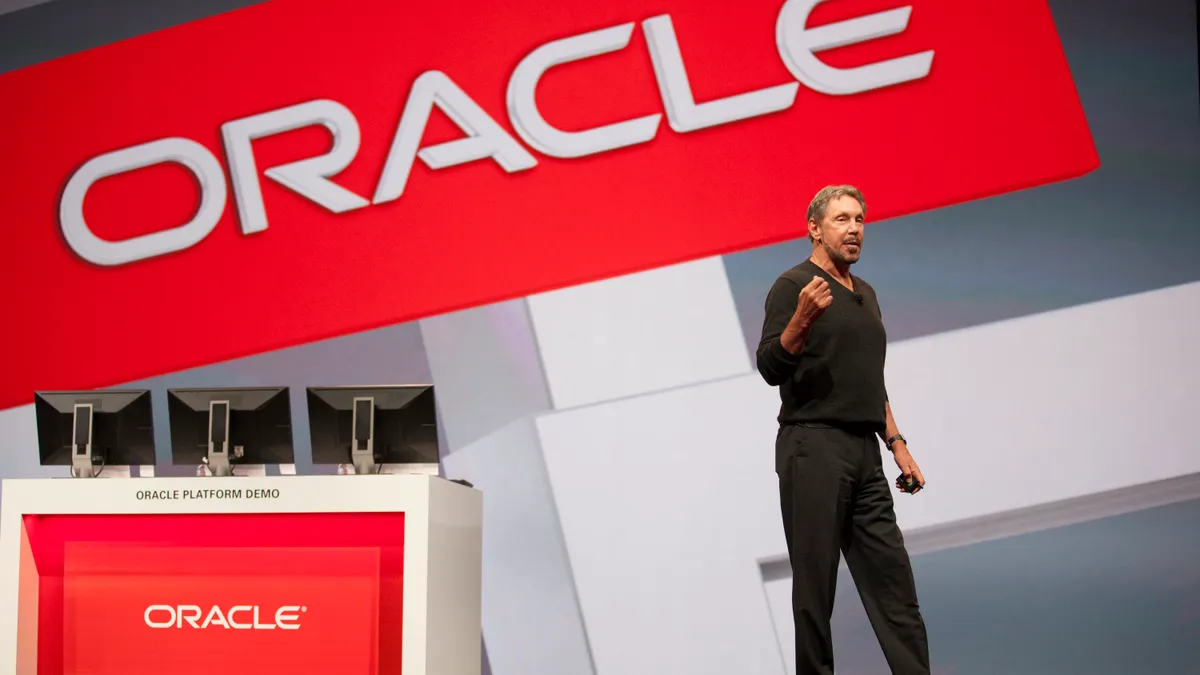There was one clear choice for business cloud provider at the end of 2015. It Amazon Web services, far and away.
In the market the longest, the company had pioneered cloud computing, debuting services at a pace that left other providers scrambling.
A company moving to the cloud might consider Microsoft or IBM. Big Blue was still a contender in the market, but growing at a slower rate than the No. 2 provider.
A fourth vendor, Google, trailed IBM in 2015, but not by much because of its growth rate, which nearly doubled that of the legacy provider. And the company had just named a new head of cloud, Diane Greene, who had serious enterprise chops. Greene's role was to add gravitas to Google's cloud business and court customers.
More than three years later, the cloud market has shaken IBM out of the top, leaving Microsoft and Google to nip at Amazon's heels. Google Cloud and its new CEO, Thomas Kurian, have an even greater challenge than Microsoft, a vendor solely focused on the business buyer and the king of enterprise software.
Companies want to diversify investments as part of the multicloud movement, creating an opportunity for providers trailing AWS to scrape away market share.
Enterprise Technology Research found Google remains a distant third in the cloud market but is showing improvements against Microsoft Azure and AWS, according to spending intentions research released this month.
Google Cloud customers are spending more on containers, cloud and analytics, business intelligence and big data, according to ETR. Machine learning and artificial intelligence investments are decelerating slightly, but spending intentions remain high.
In the next 18 months, experts expect early cloud movers to diversify investments and distribute cloud workloads. Some are already running multiple clouds by sheer circumstance because of M&A or corporate engineering teams preferring different clouds.
If a company understands how to operate in the cloud and knows what it is looking for in terms of architecture, Google Cloud, with its technical capabilities and positive reputation among the engineering set, "may all of the sudden become a more appealing second player," said Blair Hanley Frank, principal analyst at ISG, in an interview with CIO Dive.
Anything but Amazon
The dominant cloud providers today each made a name for themselves in a different business.
For Amazon, it's the everything store; Microsoft, the Office suite. And for Google, it's the advertising business, said Brian Stoffel, analyst for The Motley Fool, in an interview with CIO Dive.
Through its moonshots, Google has taken that revenue and dedicated it to low probability of success, high reward ventures.
Through it all, Google has not been super focused on enterprise customers. "They're focused on people, like you and I," said Stoffel. It's a big pivot for Google to focus on something that was not in their "circle of competence" and the company has to convince people to use its system.
Early in his tenure at the helm of Google Cloud, Kurian has made clear his plans for the future and efforts to push the go to market organization and focus on sales operations reach to business customers.
The emphasis is made possible because Google can now get in the room with the IT decisions makers. Following Google Cloud Next '19 last week, it has more examples of cloud customer success and new offerings.
"They're able to make a strong and confident pitch and feel confident they will be able to meet the needs of that buyer," said Frank. There's a "greater degree of trust" in Google Cloud. Champions of Google Cloud are more engineering focused — if not engineering-led — organizations.
The company has a more compelling reason for customer's to consider Google Cloud: It's not Amazon.
Retailers and grocers have flocked to Microsoft and Google, not wanting to give business to the competition. Last week, Google announced a number of retail-specific solutions, targeting customers in the vertical and highlighting case studies from brands like Bed Bath and Beyond, Kohl's, Target and IKEA.
Financial services, insurance and retail and consumer verticals are among the markets where spending on Google Cloud "remains healthy," according to ETR.
Which customers Google is targeting is as important as how the company is using the cloud. In the open source space, the company is partnering with open source services, a "shot across the bow for AWS," said Frank.
In the open source ecosystem, the core of vendor's business is adding commercial enhancements to open source projects. In some cases, companies are changing the terms of their licenses to try and prevent AWS from taking open source projects and commercializing them without compensating the company, according to Frank.





















